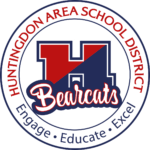By: Kim Rieffannacht, Ed.D.
I do, we do, and then you do is a pattern of instruction that has been around for many years. The teacher demonstrates or does the task, explains the content or models the skill. Then the class and teacher work together through the task at hand and finally, the learner completes independent practice or work. This model has been a part of industrial age teaching for generations. It has taken slightly different forms, but the pattern has remained true. I do. We do. You do. I do. We do. You do.
This pattern, as with the days of assembly line production and mastering skills for a repetitive job is fading. It is being replaced with a new pattern: You do, we do and if necessary I will do before starting at You do again. Meaning the learner attempts the tasks, explores the content or works to master the skill first. After their attempts, collaboration and group effort may be necessary with a facilitator’s support to reach mastery, we do. Finally, if there is an absolute need the facilitator demonstrates only what is needed to promote continued growth toward the goal.
Engagement is a key to either of these patterns of instruction. Research shows us that if learners are engaged in their learning experiences, they will have more ownership. Ownership of work leads to greater learner agency and true mastery of content. When a buyer purchases a house, makes improvements on their own and sees a direct return in equity, this is called sweat equity. Learners need to put effort in and build equity in their learning. As most of us have experienced, if we put the effort in to make or understand a concept, we feel a deeper connection to it. Just as if a new item or toy is earned as opposed to just handed to a child, it has greater value or meaning.
When discussing this model as a tool in an instructional toolbox, many wonder what is the teacher’s role in this learning activity. Their role is that of a facilitator. A facilitator is a person who guides the learners through the exploration and application of skills. This takes many forms and often depends on the group of learners and the activity at hand. Facilitators coach, support, provide resources, set expectations and guide learners to the place where they find the ah-ha and master a new skill and content. In a truly customized environment a facilitator will also design opportunities for learners to explore content that will meet their specific needs such as learning style, career goals, interests and pace of learning. Independence is a large portion of this model, but there is also a great amount of responsibility on all those involved in the process.
Facilitators are given a great amount of responsibility to monitor learner’s progress and ensure they have what they need to be successful. In education as a whole, group success rates have often driven the success rate of a lesson, school or district. For many years Adequate Yearly Progress (AYP) was the number to reach and educators got very nervous as that number approached 100 percent proficient or advanced. High standards and goals for achievement are critical and necessary, but all children are different. Not every child can meet the same high standard, but they can meet a high standard that is appropriate for them. This requires dedication, teaching and awareness of individual needs at a greater level. Setting, facilitating, assessing, monitoring, adjusting, instruction and so many more details goes into the execution of this model.
The real benefit and reason for utilizing a model like this is it mirrors real life at a greater level. Life is filled with problems, situations and choices that do not come with a scaffolded model or mini lesson before them to help prepare you. As humans we need to have the ability to problem solve, see beyond what is directly in front of us, think through options critically, find creative solutions and realize potential consequences of actions. This happens in everyday life. People utilize their functional knowledge of finances, traffic patterns, their health, and how the world works to make thousands of decisions within a day. These decisions are often simple but can become complex when interwoven into the fabric of a set of experiences, emotions and interpersonal interactions.
There is a skill set our learners need to be successful problem solvers and decision makers. They need to understand how to obtain reliable information, utilize that information and make informed decisions that take into consideration future implications. They need to be able to think outside the box and utilize what they know and information they find to create solutions to old and new problems. It is no longer enough to memorize information and reiterate it on a test, these learners need to be able to shift into being creators of content, not just consumers. Simply put, they will be required to apply what they have learned. This does not happen in isolation, there needs to be collaboration and communication at the classroom, school, local and global level where appropriate. Seeking resources beyond what is right in front of the learner is a powerful skill. Put it all together and learners need to be able have critical thinking, collaboration, communication and creative reasoning skills. These are the skills that 21st Century employers desire in new recruits more than anything.
Make no mistake, this model is full of learning, responsibility and growth, for both learner and teacher! It is time to give the ownership of learning to the learner and allow them to effectively utilize the knowledge that is so easily available to them. Let’s allow them the opportunity to develop the skills that will serve them well as they develop into the leaders of tomorrow.
